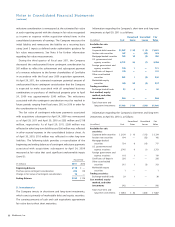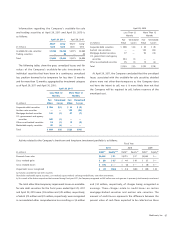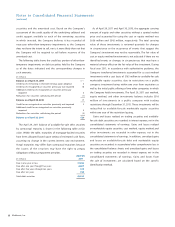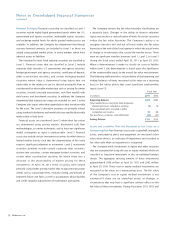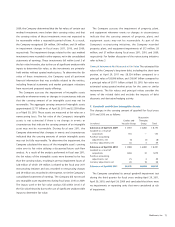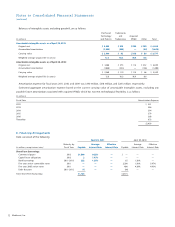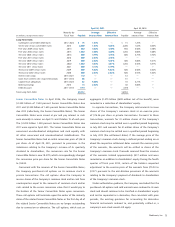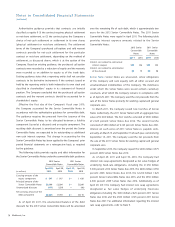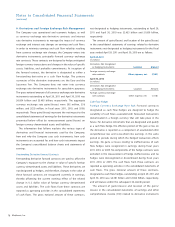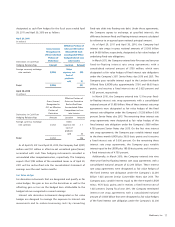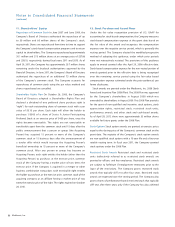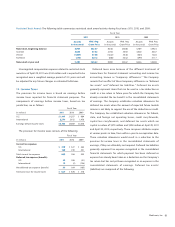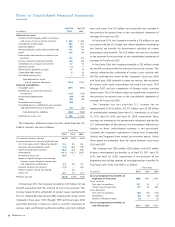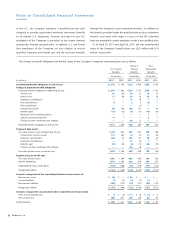Medtronic 2011 Annual Report Download - page 80
Download and view the complete annual report
Please find page 80 of the 2011 Medtronic annual report below. You can navigate through the pages in the report by either clicking on the pages listed below, or by using the keyword search tool below to find specific information within the annual report.
76 Medtronic, Inc.
Notes to Consolidated Financial Statements
(continued)
9. Derivatives and Foreign Exchange Risk Management
The Company uses operational and economic hedges, as well
as currency exchange rate derivative contracts and interest
rate derivative instruments to manage the impact of currency
exchange and interest rate changes on earnings and cash flows.
In order to minimize earnings and c
ash flow volatility resulting
from currency exchange rate changes, the Company enters into
derivative instruments, principally forward currency exchange
rate contracts. These contracts are designed to hedge anticipated
foreign currency transactions and changes in the value of specific
assets, liabilities, and probable commitments. At inception of
the forward contract, the derivative is designated as either a
freestanding derivative or a cash flow hedge. The primary
currencies of the derivative instruments are the Euro and the
Japanese Yen. The Company does not enter into currency
exchange rate derivative instruments for speculative purposes.
The gross notional amount of all currency exchange rate derivative
instruments outstanding at April 29, 2011 and April 30, 2010 was
$6.834 billion and $5.495 billion, respectively. The aggregate
currency exchange rate gains/(losses) were $92 million, $56
million, and $(53) million, in fiscal years 2011, 2010, and 2009,
respectively. These gains/(losses) represent the net impact to the
consolidated statements of earnings for the derivative instruments
presented below offset by remeasurement gains/(losses) on
foreign currency denominated assets and liabilities.
The information that follows explains the various types of
derivatives and financial instruments used by the Company,
how and why the Company uses such instruments, how such
instruments are accounted for, and how such instruments impact
the Company’s consolidated balance sheets and statements of
earnings.
Freestanding Derivative Forward Contracts
Freestanding derivative forward contracts are used to offset the
Company’s exposure to the change in value of specific foreign
currency denominated assets and liabilities. These derivatives are
not designated as hedges, and therefore, changes in the value of
these forward contracts are recognized currently in earnings,
thereby offsetting the current earnings effect of the related
change in U.S. dollar value of foreign currency denominated
assets and liabilities. The cash flows from these contracts are
reported as operating activities in the consolidated statements
of cash flows. The gross notional amount of these contracts,
not designated as hedging instruments, outstanding at April 29,
2011 and April 30, 2010 was $2.453 billion and $1.839 billion,
respectively.
The amount of gains/(losses) and location of the gains/(losses)
in the consolidated statements of earnings related to derivative
instruments not designated as hedging instruments for the fiscal
years ended April 29, 2011 and April 30, 2010 are as follows:
April 2 9, 2 011
(in millions)
Derivatives Not Designated
as Hedging Instruments Location Amount
Foreign currency exchange
rate contracts Other expense, net $(107)
April 30, 2010
(in millions)
Derivatives Not Designated
as Hedging Instruments Location Amount
Foreign currency exchange
rate contracts Other expense, net $ (118)
Cash Flow Hedges
Foreign Currency Exchange Rate Risk Forward contracts
designated as cash flow hedges are designed to hedge the
variability of cash flows associated with forecasted transactions
denominated in a foreign currency that will take place in the
future. For derivative instruments that are designated and qualify
as a cash flow hedge, the effective portion of the gain or loss on
the derivative is reported as a component of accumulated other
comprehensive loss and reclassified into earnings in the same
period or periods during which the hedged transaction affects
earnings. No gains or losses relating to ineffectiveness of cash
flow hedges were recognized in earnings during fiscal years
2011, 2010, or 2009. No components of the hedge contracts were
excluded in the measurement of hedge ineffectiveness and no
hedges were derecognized or discontinued during fiscal years
2011, 2010, or 2009. The cash flows from these contracts are
reported as operating activities in the consolidated statements of
cash flows. The gross notional amount of these contracts,
designated as cash flow hedges, outstanding at April 29, 2011 and
April 30, 2010 was $4.381 billion and $3.656 billion, respectively,
and will mature within the subsequent 36-month period.
The amount of gains/(losses) and location of the gains/
(losses) in the consolidated statements of earnings and other
comprehensive income (OCI) related to derivative instruments


